7 September 2016
Keep your Berings Strait
Posted by larryohanlon
This is the latest in a series of dispatches from scientists and education officers aboard the National Science Foundation’s R/V Sikuliaq. Read more posts here. Track the Sikuliaq’s progress here.
By Kim Kenny, September 4, 2016 -our first full day at sea
Note: Our internet has been very unreliable for the past 48hrs (you mean the remote Arctic doesn’t have a fast connection?!), so we’re now adding some older updates. Bare with us if there are future delays. Video content will be added from onshore, so there will be a few notes as place holders for those.
This morning we woke up in the Arctic Circle. The view has gone from a small dock alongside a construction site, the stout skyline of Nome and a few nearby ships, to endless ocean and sky.
Today is our first full day at sea after leaving the port of Nome yesterday morning. We’re traveling through the Bering Strait, headed toward a mooring about 30 miles off of Barrow, Alaska. (The mooring is actually that of Robert Pickart, a well known physical oceanographer who isn’t on this cruise.) The Board of Lies says ETA is 23:00 tomorrow, Monday, Sept 5. It’s called the Board of Lies because anything written on it is up to change. It tells us any upcoming operation plans and is updated by the Chief Scientist – Laurie. Clipped to the board, which is located in the large lab on the main deck, is a print-out of a satellite image. It looks like we’ll probably “hit” ice tomorrow (the captain prefers the correct term “entering”). This likely isn’t a problem, but may delay us slightly. The Sikuliaq (the name means young sea ice) was made to break first year sea ice up to 4ft thick. We can’t tell from the image exactly what kind of ice we’ll find tomorrow, but the Sikuliaq should be good for it. Some of us are looking forward to seeing Arctic sea ice for the first time, and to seeing the ship in action.
We seem to have left the internet in Nome – no one has had access to the luxuries of email for approximately 30 hours. Since it’s a holiday weekend, we’re less likely to get the necessary shore-side support for internet until Tuesday. (Thanks a lot, Labor Day.) It doesn’t help that we’re facing north and the pieces of equipment on deck aren’t aligned properly. So, apologies for the radio silence. Someone needs to turn in a fellowship application due Tuesday, someone else is expecting to hear the results of a grant application, people have loved ones to communicate with, one crew member just wants to know the score of the Patriots game. We all have internet needs.
There’s a convenient on-ship network that we can all connect to in order to share data, photos, and other files without needing any external internet connection. And there’s a “webpage” for the Sikuliaq that includes an interactive mapping tool, an RSS newsfeed (for some reason the Alaska Dispatch allows full articles while the rest just have short updates) and a downloaded version of Wikipedia from May 2015. We can print, fax, and copy onboard. But even these things have been unreliable today. Ethan, the all-around handyman marine technician who has helped with scientific set-up and has been burdened with the task of restoring internet, has been kept busy the past few days.
Other than network issues, life here is a relative luxury. The ship is rocking a lot more than yesterday, but I’m told not nearly as much as other research ships do (plus we’ve had good weather). I’m also told it’s much quieter than other research ships. The constant hum of an engine isn’t prominent; the sound I notice more is a kind of rhythmic creaking as the ship tilts, as if she were calming inhaling and exhaling.
It’s a thrill to be here, for many of the cliché reasons – to look out the porthole and see ocean; to stand on deck feeling the wind and hearing the waves; to have a defined, group purpose of scientific discovery; to be removed from “normal” life and the necessities that come with that life; to be somewhere remote; the sense of challenge and camaraderie and adventure. But warm fuzzy feelings aside, people came here to work. Everyone has a job to do. There won’t be too much time to contemplate the poetic beauty of the waves from here on out (although there has been time to watch “Date Night,” “I, Frankenstein” and “Fools Gold” in the lounge). Some people are seasick or battling the beginnings of a cold. But the science must go on.
Doing science always comes with challenges. So far, those have been mostly related to equipment set-up. Miguel’s team initially had trouble making sure there weren’t any leaks in the tubes that brought water from the ocean into their section of the lab. Burke’s team battled the LabVIEW program until it was recording data, and had to do some trouble-shooting with the coils in their nutrient-measuring system. A piece of Laurie’s equipment – a filament for a mass spectrometer – wasn’t functioning properly, resulting in some noisy data. So she and Miguel performed “open heart surgery” on the spectrometer to replace the filament; we’ll know in a few hours – after some data has come in – if the operation was successful.
Despite a few equipment tweaks, almost everyone has already taken some kind of measurement. A line is set up under the ship’s hull so that surface water is continually pumped from the ocean into the lab. These are called surface underway measurements. Laurie, Miguel, and Burke are all established in the main lab on the 020, or main, deck, each next to a sink for easy access to the incoming sea water. Kimberley Craig and Kylie Welch, both undergraduate research assistants with Miguel, have begun their rotations at their station in the forward-most corner of the room. Every 30min, they measure particulate organic carbon (POC) and every 4hrs they measure chlorophyll and dissolved organic compounds (DOC). In-between they read books (a novel about a baseball player for Kimberley, a murder mystery for Kylie). They occasionally use a wrench to tap on the “de-bubbler” tubes to, ironically, remove bubbles. Bubbles are bad news because they could be mistakenly measured as particles and mess up the data. Miguel can be heard muttering “F*@#ing bubbles” while leaning over his work.
(Coming soon: a timelapse of the lab set-up)
Rachel and Debbie’s team is set up down the hall, in the analytics lab. They call it the Tiki Lounge. They’ve decorated the doorframe and interior of the room with Hawaiian-themed streamers and stickers, a tradition Debbie has had for years of polar expeditions. This is where the VIMS group effort to process samples takes place. Next door is the freezer room where their mass spectrometer is kept (to prevent bubbles forming due to temperature change). Inside is a plastic beach scene taped to one wall, so it looks as if you’re gazing out a window at the tropics, when in actuality you’re wearing an insulated body suit in the Arctic. Mary-Kate Rogener, a graduate student from the University of Georgia, does most of this work. Katie Harding, a Ph.D. student from John Zehr’s lab at the University of California, Santa Cruz, who is also collaborating with Rachel and Debbie’s team, is doing DNA analysis and is set up in the aft-most corner of the main lab.
Every scientific team is collecting sea water – be it continually from the line running under the ship, or from bottles when the ship is stopped and a CTD (a piece of oceanographic equipment that measures Conductivity, Temperature, and Depth, and salinity as a function of the first two) is dropped deeper into the ocean to collect water. Each team is analyzing sea water, but in different ways to find different things.
Laurie is looking at the gases in the water – the amount of oxygen and argon, and the ratio of the two, along with some nitrogen measurements – by putting water samples through a cartridge that removes the gas from the water, and then putting that gas through a mass spectrometer.
Miguel is looking at what particles are in the water (these particles will probably mostly be phytoplankton but may also be detritus) by pushing his water samples through different sized (but all tiny – 13mm, 25mm, and 47mm in diameter) filters and seeing what’s left on the filters.
Burke is looking at the nutrients in the water – namely silicate, phosphate, nitrogen, and ammonium – by mixing different reagents with the water; different reactions will indicate the presence of different nutrients. He’s also looking at the amount of carbon in the water (more on this later).
Rachel is looking at the nitrogen fixation in the water by adding different types of gas to different bottles of water and seeing how the tiny organisms in the water use that gas. That involves a lot of filtering of water, and a lot of people in a small space handling bottles. The nutrients her team collects will be analyzed later in the lab. Most of this work has been done with CTD samples so far.
Seeing the culmination of the scientific set-up has been my favorite part of the cruise thus far. These small, carefully composed and monitored stations are the beginnings of all the other things the scientific community and the public eventually sees. The data analysis, the writing and publishing of a paper, the possible impact on the rest of the world – it all starts here, with about two dozen people scrambling over the course of a few days to make sure everything is working right. (I guess it really starts with the idea for the study, the hypothesis and the questions…Or maybe it starts “on the shoulders of giants,” based on the information we’ve learned from scientists before us. But, to me, this is the first committed step to making the idea of a study a reality — it starts here.) And witnessing the very human part of the technical work is fun – the scientists frustrated with their equipment, their process of problem solving. Burke sighing heavily as he glares at a computer monitor, Laurie nursing a cup of coffee as she stares fixedly ahead, resolving to work on her equipment again, Miguel blasting Spanish rock music, the banter between everyone. It’s a team effort. There are 42 of us on the ship, including crew and scientists. (The Sikuliaq has a max occupancy of 46.) PIs often get a lot of the credit, but behind the first name on the eventual publication are Ph.D. students, graduate students and undergraduates, marine technicians, crew members, technical experts. Every single person on this cruise has an important part to play. It’s humbling to see how hard everyone works to get it all right.
Once we get to the mooring in Barrow – either tomorrow or Tuesday, depending on how much the expected ice slows us down – we’ll work our way back toward Nome, taking measurements along the way. That’s when a lot more of the work starts.
— Kim Kenny is a freelance journalist who specializes in science writing and multimedia. This post was originally published on thedynamicarctic.wordpress.com


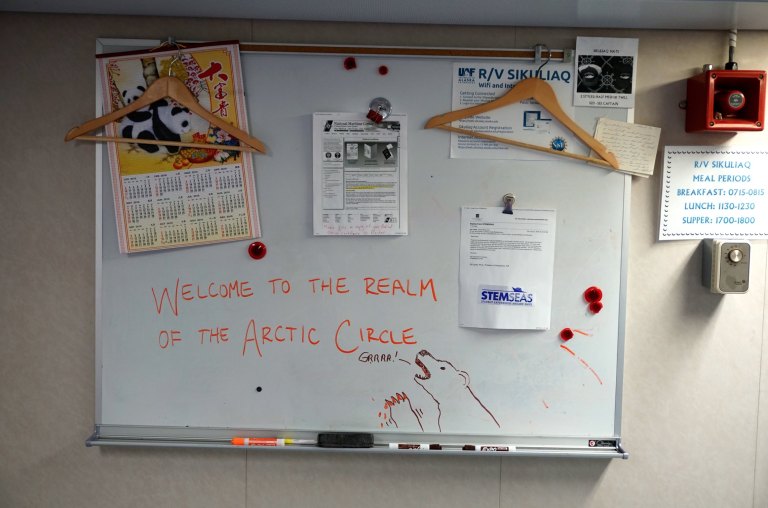
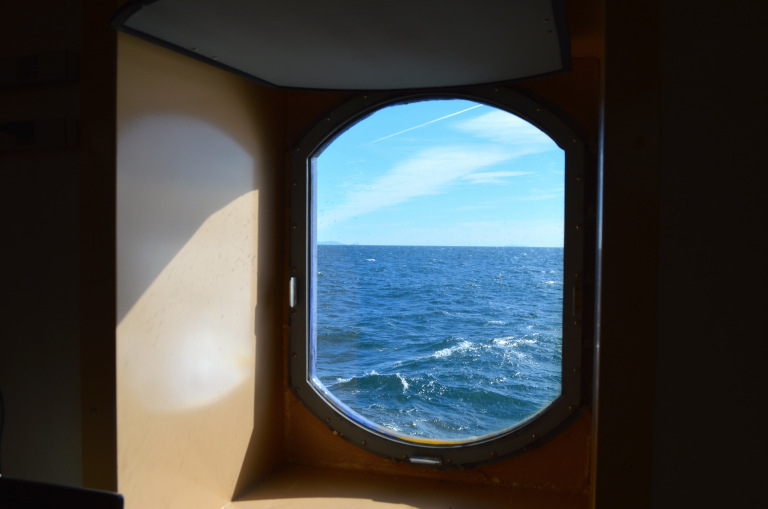


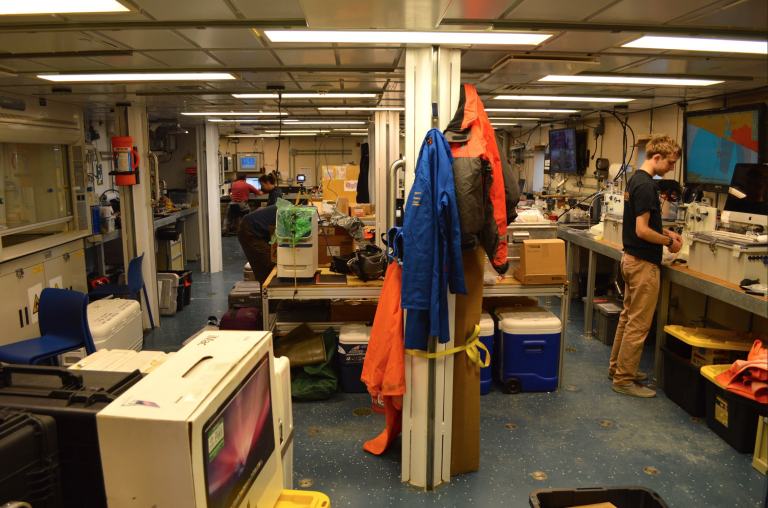
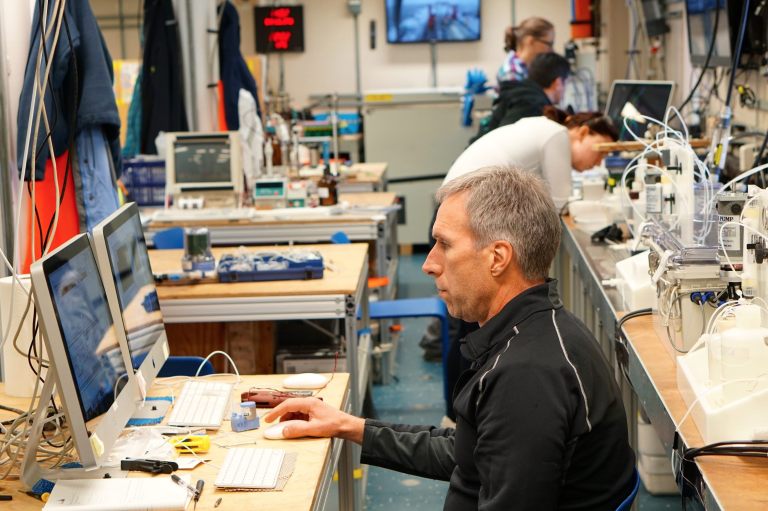
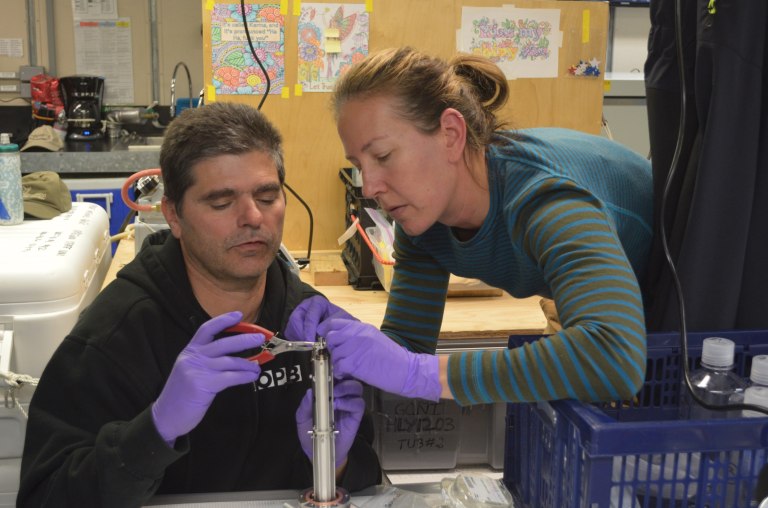
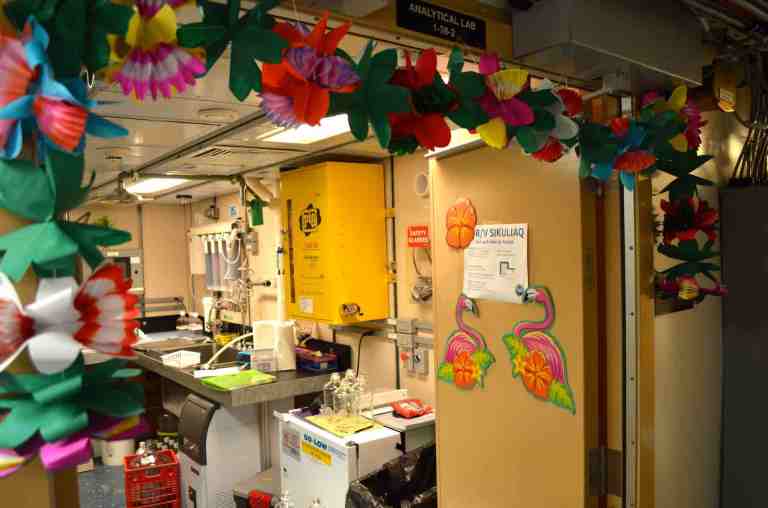
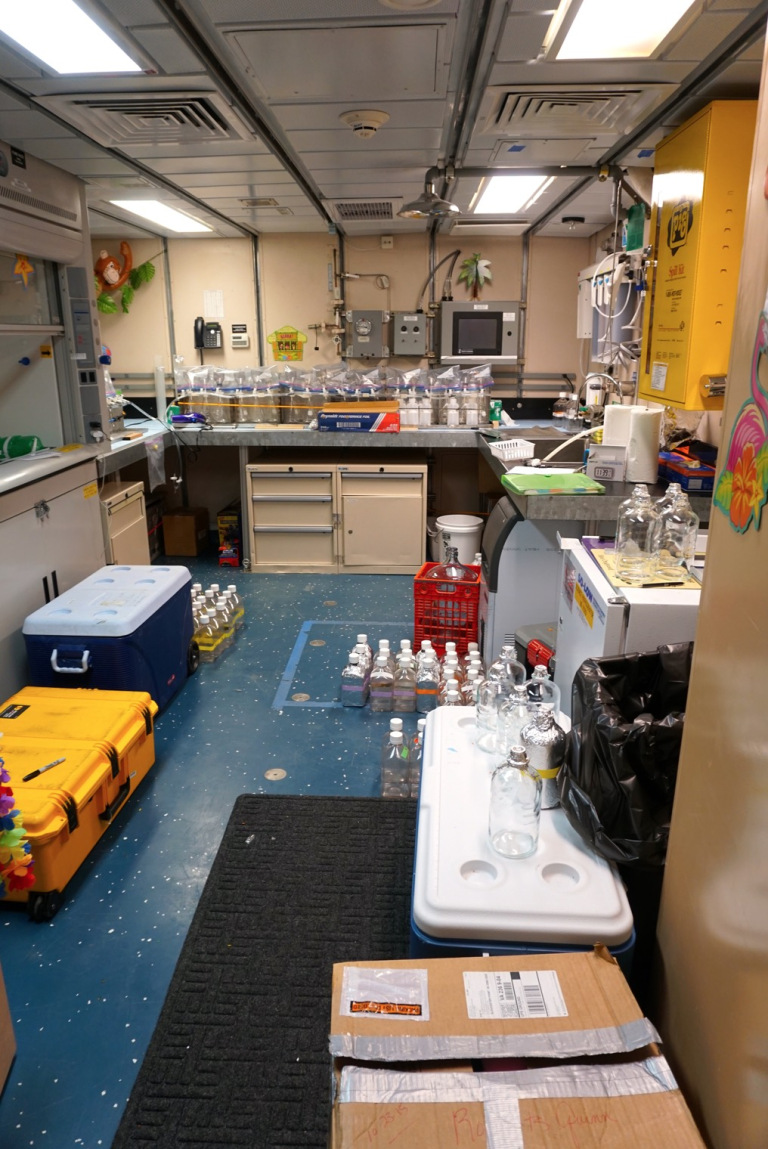
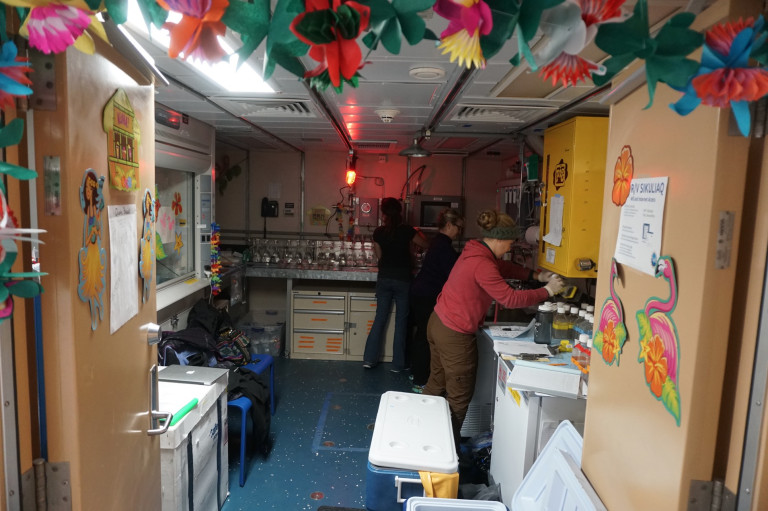
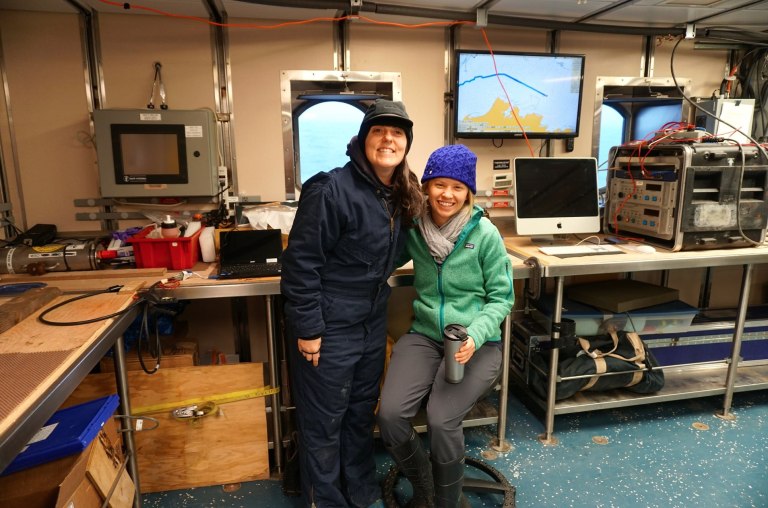
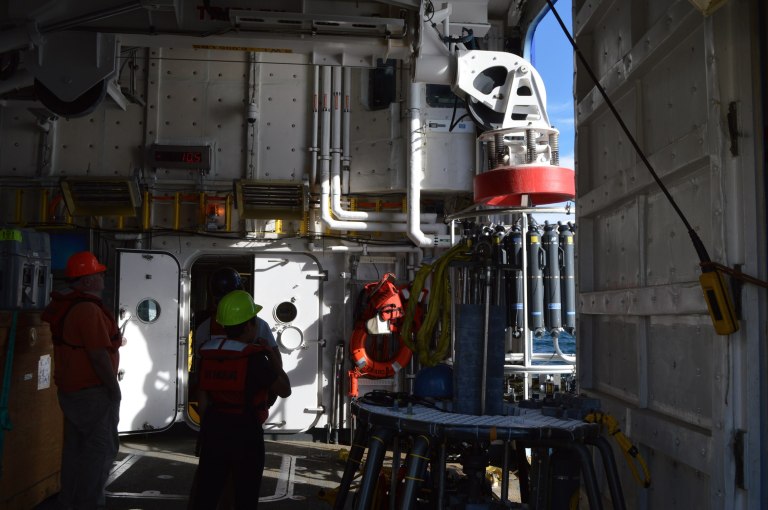
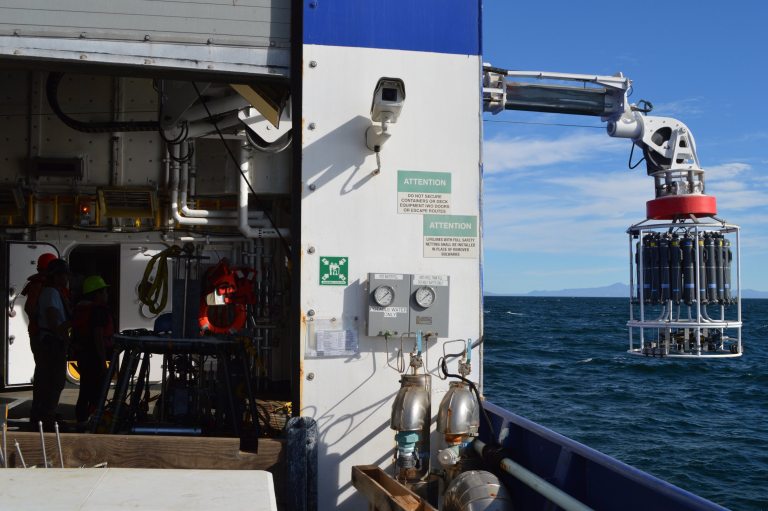









 GeoSpace is a blog on Earth and space science, managed by AGU’s Public Information staff. The blog features posts by AGU writers and guest contributors on all sorts of relevant science topics, but with a focus on new research and geo and space sciences-related stories that are currently in the news.
GeoSpace is a blog on Earth and space science, managed by AGU’s Public Information staff. The blog features posts by AGU writers and guest contributors on all sorts of relevant science topics, but with a focus on new research and geo and space sciences-related stories that are currently in the news.